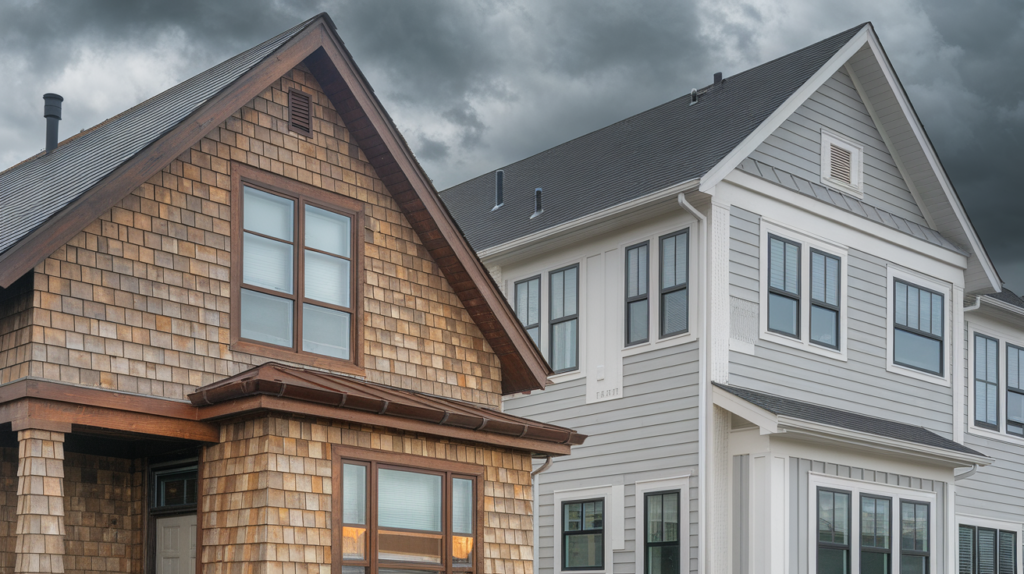Choosing the right siding for your home can feel like a big decision, especially with so many options available.
If you’re stuck between Hardie Board and vinyl siding, you’re not alone. Many homeowners are faced with the same dilemma.
Both materials have their benefits and challenges, but which one is truly the best fit for your needs?
I know you’re looking for real opinions and experiences from others who’ve already made this choice.
You want to hear about durability, maintenance, costs, and how each option holds up over time.
I’ll break down everything you need to know so you can make an informed decision that suits your home and budget.
By the end, you’ll have a clearer idea of which siding is right for you, without the confusion.
So, let’s dive in and find out which material works best for your home, based on what real homeowners have shared.
What is Hardie Board?
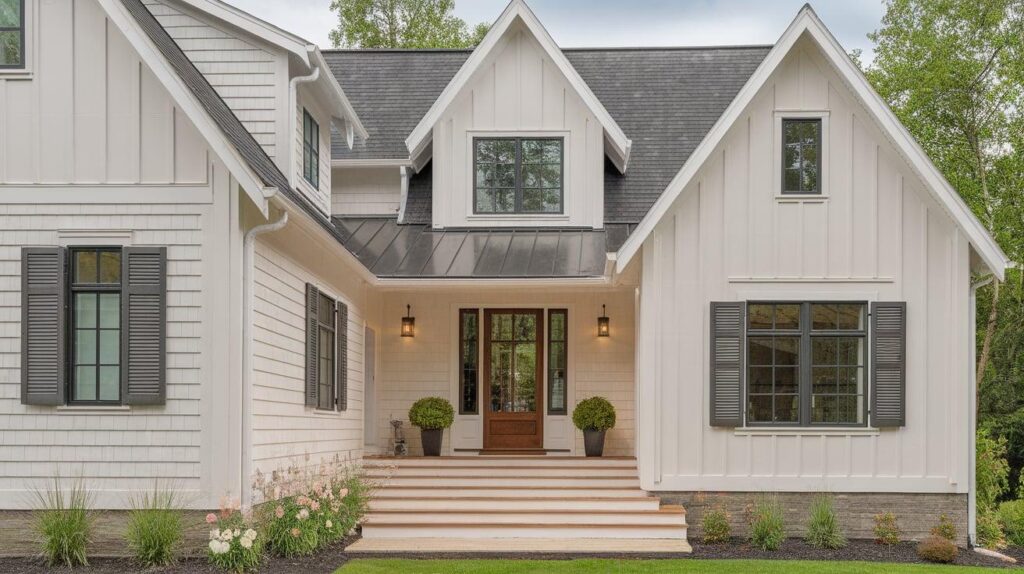
Hardie Board, also known as fiber cement siding, is a popular choice for many homeowners.
It’s made from a mix of cement, sand, and cellulose fibers, which gives it a strong and durable structure.
This siding is known for its ability to resist fire, rot, and pests, making it a great option for homes in areas with extreme weather conditions.
One of the reasons Hardie Board is so loved is because of its appearance.
It can be painted in a variety of colors and has a more natural, high-end look compared to vinyl siding.
Many homeowners also appreciate that it’s very low-maintenance once installed.
However, Hardie Board isn’t the cheapest option. It tends to cost more than vinyl siding, both for the material itself and the installation.
But its durability and long-lasting performance can make it a solid investment over time, especially if you’re looking for a high-quality, strong siding option.
What is Vinyl Siding?
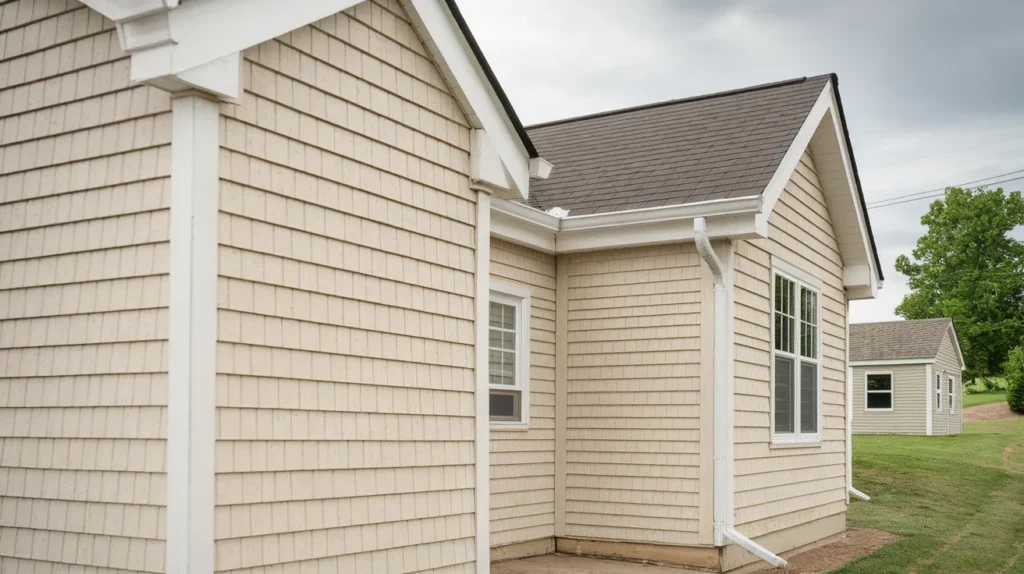
Vinyl siding is one of the most common types of siding used on homes today. It’s made from PVC (polyvinyl chloride), a type of plastic, and comes in a variety of colors and styles.
One of the main reasons people choose vinyl is because it’s affordable compared to other materials like Hardie Board or wood.
Vinyl siding is also known for being very low-maintenance. It doesn’t need to be painted, and it’s resistant to rot, pests, and fading.
Cleaning it is easy, usually just requiring a rinse with a hose.
However, vinyl siding isn’t as durable as some other options. It can crack or get damaged from strong impacts, like hail or severe storms.
It also has a shorter lifespan compared to materials like Hardie Board, and it can start to show signs of wear and tear after several years.
Despite these drawbacks, many homeowners still love vinyl for its cost-effectiveness and convenience.
Hardie Board vs Vinyl Siding: A Comparison
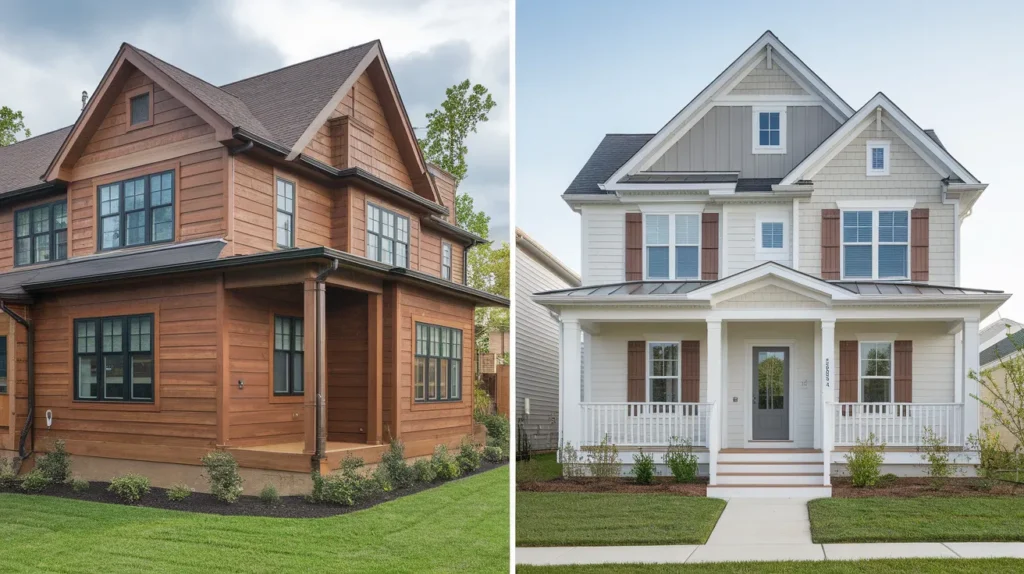
When it comes to choosing between Hardie Board and vinyl siding, understanding the differences can help you make a decision that suits your needs and budget.
| Feature | Hardie Board | Vinyl Siding |
|---|---|---|
| Durability | Highly durable, resists fire, pests, and rot | Less durable, prone to cracking and warping |
| Lifespan | 30-50 years | 15-30 years |
| Maintenance | Requires periodic painting and checks | Low maintenance, just cleaning needed |
| Appearance | More natural, high-end look, customizable | A variety of colors, but can look less premium |
| Cost | More expensive upfront | Budget-friendly |
| Installation | More complex and time-consuming | Easier and faster to install |
| Weather Resistance | Excellent for extreme weather | Can fade or crack under extreme conditions |
Both options offer unique benefits, but they also come with their own set of challenges.
Real Experiences: What Homeowners Are Saying
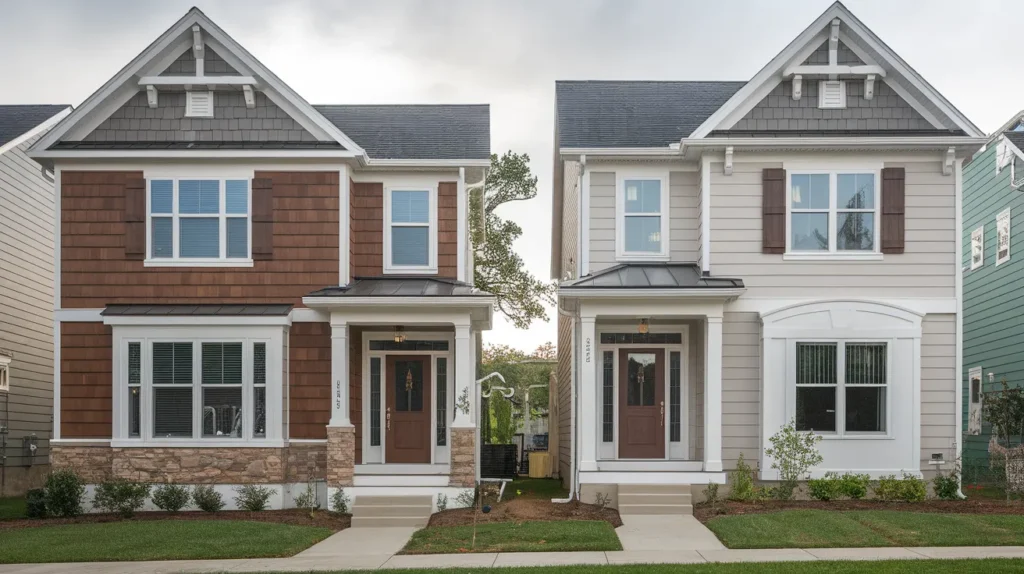
Choosing siding for your home is a big decision, and hearing from other homeowners can be really helpful.
Many who choose Hardie Board praise its durability and high-end look.
One homeowner shared how their Hardie Board held up perfectly after a major storm, while some vinyl siding around them cracked or faded.
Others appreciate its ability to maintain color and texture over time.
However, some found it more expensive and challenging to install, noting the higher upfront costs and longer installation times, but felt it was worth the investment for long-term protection.
On the other hand, homeowners who choose vinyl siding often highlight its affordability and easy installation.
One person shared how simple it was to install and how low-maintenance it is afterward.
However, some reported that vinyl became brittle over time, cracking or warping in harsh weather.
Despite this, many still find it a budget-friendly, low-maintenance option for a quick and easy solution.
Which Is Right for Your Home?
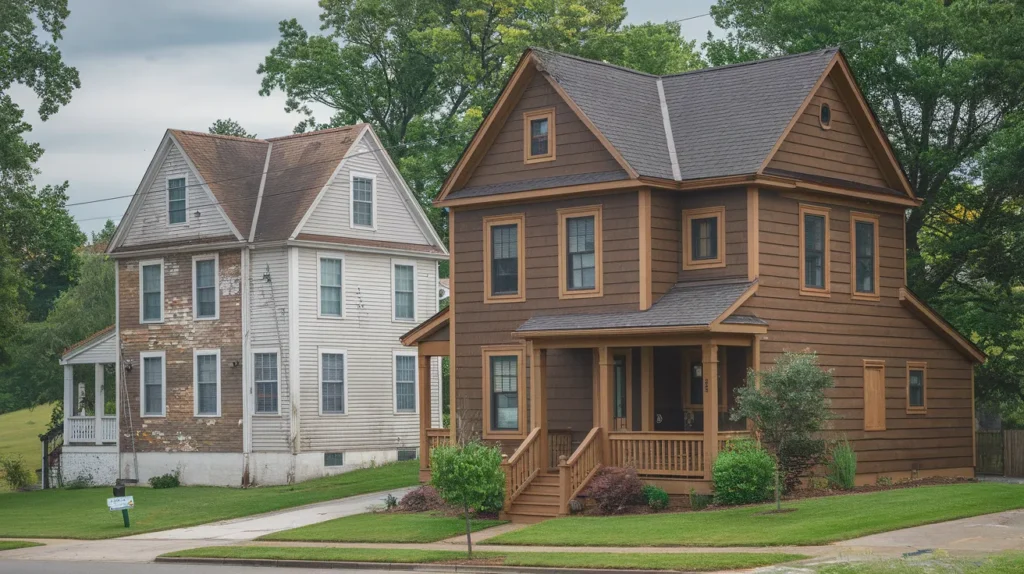
Choosing the right siding for your home depends on several factors, including your climate, budget, style preferences, and long-term goals.
Choose Hardie Board When
- You live in an area with extreme weather conditions.
- Durability and resistance to fire, pests, and harsh conditions are a priority.
- You want a premium appearance for traditional or high-end homes.
- Longevity is an important factor for you.
Choose Vinyl Siding When
- You’re on a tighter budget and need a cost-effective solution.
- You prefer a low-maintenance option.
- You’re looking for a modern, budget-friendly look.
- Ease of installation is important to you.
Ultimately, the decision comes down to what matters most to you-whether it’s durability, cost, or the aesthetic appeal.
Listening to other homeowners’ experiences can help guide you toward the best option for your needs.
Common Mistakes to Avoid
- Overlooking Installation Costs: Many focus only on the material cost but forget to factor in labor. Hardie Board can be more expensive to install than vinyl siding, so be sure to include installation costs in your budget.
- Assuming Vinyl Siding Is Maintenance-Free: While vinyl siding requires less upkeep than Hardie Board, it still needs regular cleaning to avoid fading or buildup. Skipping this step can lead to premature wear.
- Not Considering Long-Term Durability: Some homeowners choose vinyl siding for its low cost without considering its shorter lifespan. If you live in an area with harsh weather, Hardie Board may offer more durability and protection over time.
- Choosing the Wrong Style: Not all sidings fit every home. Hardie Board complements traditional and high-end homes, while vinyl siding is a better fit for modern or budget-conscious homes. Make sure the siding suits your home’s style.
Conclusion
In the end, choosing between Hardie Board and vinyl siding comes down to what’s most important for you and your home.
If you’re looking for something that’s durable, fire-resistant, and can stand up to extreme weather, Hardie Board might be a better option.
It’s a great choice if you’re willing to invest a little more upfront for long-term durability and an upscale look.
However, if you’re on a budget and want something that’s easy to maintain, vinyl siding can be a solid option.
It’s affordable, comes in plenty of colors, and doesn’t require much upkeep.
I recommend considering your home’s location, your budget, and how much maintenance you’re willing to do.
It’s also helpful to hear from other homeowners who’ve used both materials.
In the end, the right choice will depend on what works best for your needs and how you want your home to look and feel.

